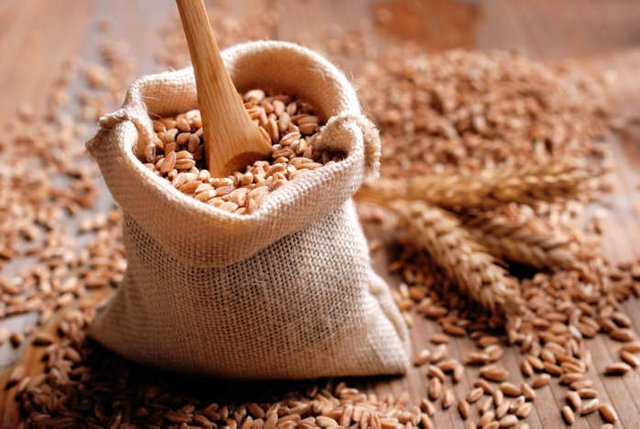
Former cereal species are returning to favor, more and more often replacing modern high-gluten wheat varieties that are the cause of many food allergies. It turns out that ancient cereals such as a samopsza, plankton (it was probably the bread that was served during the Last Supper) and spelled are better tolerated and healthier for our body.
Samopsza - functional food
Samopsza is a wild form of wheat from Persia, whose formula has not been changed for 7,000 years.
In Greece, it is known as "tiphe", in Turkey "siyez", in Germany "Einkorn", in Hebrew it is called "sifon", and in Italy and France, it is called "small spelled."
Due to the high content of bioactive substances, products from the self-determined can be called functional food, and even healthy.
Samopsza is rich in protein (up to 50% more than common wheat), vitamin E (35 times more), beta-carotene (4 times more), antioxidants and micro- and macroelements: magnesium, iron, zinc and manganese.
It is also a natural source of silicon necessary for the proper maintenance of the skin, hair or nails.
In addition, this cereal provides the body with a valuable dose of exogenous amino acids (the body can not create them) - phenylalanine, tyrosine, methionine and isoleucine, which have a beneficial effect on the nervous system.
The flour from the samovszy is ideal for baking wholemeal bread.
Bread baked with such flour has a characteristic, yellowish color and a slightly nutty flavor.
Płaskurka - the grain of the Last Supper
Płaskurka is a cereal that was cultivated over 2,000 years ago in the Middle East.
It was from the flour of the flatbread that bread was probably baked, which Christ gave to his disciples during the Last Supper.
Flathead belongs to one of the first domesticated cereals.
The greatest popularity enjoyed during the Roman Empire, however, and the beginnings of Polish agriculture are related to the cultivation of this grain.
Seeds of the duckworm were found in the caves near Ojców.
The grains are quite hard, and the flour itself resembles durum.
You can bake bread from it (it has a slightly nutty flavor and honey scent), biscuits, biscuits, wholemeal flour, grits, pasta or produce beer.
Compared with wheat, the flathead has a lot more fiber, which has a positive effect on the digestive system, calcium, phosphorus, vitamin E, PP and B1 and β-glucans (carbohydrates), which reduce blood cholesterol levels and balance blood glucose, protecting against type 2 diabetes.
Grains of the squill perfectly warm up the body, support circulation and increase the body's immunity.
In addition, it is believed that regular consumption of the algae prevents the formation of tumors of the digestive system.
Spelled - a rescue for humanity
Spelled is called the cereal of Saint Hildegard of Bingen, because it was her medicine that focused around this cereal, and she herself claimed that it is a salvation of humanity from disease.
Mystic attributed to him a hematopoietic activity, building muscles and laughing.
She recommended that you eat it with every meal.
To this day, German doctors recommend systematic consumption of spelled products that give a long-lasting feeling of being full, regenerate the whole body, restore health and ensure well-being.
Spelled best in the form of pasta, cereal (instead of oatmeal), as spelled or spelled coffee, or as grains, flour, bran and spelled beer.
Spelled diet is indicated for people who have problems with the digestive system and circulatory system, chronically tired, allergy sufferers, with liver and kidney diseases and susceptible to infections.
Cereal was used in ancient times to treat fever, influenza, hemorrhage and other acute diseases.
It is also a natural remedy that greatly improves the mood and positively affects the psyche.
Emphasizing the role of ancient cereal species, it is worth mentioning the quinoa and amaranth, which already 4,000 years ago were known as those that gave strength and bravery.
These cereals are rich in protein (very similar to animal protein), iron and flavonoids, ie substances that have antioxidant effects - they delay the aging process, increase immunity and protect against cancer.
Importantly, amaranth and quinoa are gluten-free cereals, but with a very high nutritional value, which is why they should be included in the diet of people with, for example, celiac disease.